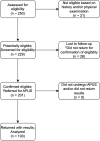Span of spleen is associated with disability status in multiple sclerosis: a cross-sectional abdominopelvic ultrasonography study
- PMID: 38961187
- PMCID: PMC11222531
- DOI: 10.1038/s41598-024-66216-5
Span of spleen is associated with disability status in multiple sclerosis: a cross-sectional abdominopelvic ultrasonography study
Abstract
Characteristics of livers and spleens of people with multiple sclerosis (pwMS) could constitute good biomarkers of MS-related characteristics such as the disability status. To test the hypothesis "the gross anatomical features of livers and spleens, are not similar between pwMS with different disease characteristics" a cross-sectional study was conducted on pwMS seen at the Isfahan MS clinic, Iran, from February until December 2023. Definitive, otherwise-healthy, pwMS were enrolled after an initial laboratory evaluation. Presence/absence and grading of non-alcoholic fatty liver disease (NAFLD) and the span of spleen were determined by a radiologist using high-resolution abdominopelvic ultrasonography. 193 pwMS (160 women) were enrolled. Of whom, 143 (74.1%) were receiving first-line disease-modifying therapies (DMTs), 24 (12.4%) fingolimod, and 26 (13.5%) rituximab. The span of spleen was negatively associated with EDSS (adjusted β [SE] - 4.08 [1.52], p < 0.01), as well as 6 m-CDW (adjusted β [SE] - 6.94 [3.56], p = 0.05), unlike age, DMTs, and MS duration (all with p > 0.05). Receiver operating characteristic analysis showed, spleen span performs significant but poor in discrimination of EDSS > 1 from EDSS = 1 (area under curve [AUC] 0.62, SE 0.05, p < 0.01), yet, significant and fair in discrimination of presence from absence of 6 m-CDW (AUC 0.72, SE 0.06, p < 0.01). Other findings were unremarkable. Further longitudinal, prospective studies are warranted to confirm whether smaller spleens are predictive of higher disability accrual rate in pwMS. Particularly, findings require further validation in untreated/treatment-naïve pwMS, and ones with higher EDSS scores.
© 2024. The Author(s).
Conflict of interest statement
The authors declare no competing interests.
Figures



Similar articles
-
Trajectories of disease-modifying therapies and associated sickness absence and disability pension among 1923 people with multiple sclerosis in Sweden.Mult Scler Relat Disord. 2023 Jan;69:104456. doi: 10.1016/j.msard.2022.104456. Epub 2022 Dec 9. Mult Scler Relat Disord. 2023. PMID: 36529068
-
mRNA versus inactivated virus COVID-19 vaccines in multiple sclerosis: Humoral responses and protectivity-Does it matter?Mult Scler Relat Disord. 2023 Jul;75:104761. doi: 10.1016/j.msard.2023.104761. Epub 2023 May 10. Mult Scler Relat Disord. 2023. PMID: 37247488 Free PMC article.
-
Estimated connectivity networks outperform observed connectivity networks when classifying people with multiple sclerosis into disability groups.Neuroimage Clin. 2021;32:102827. doi: 10.1016/j.nicl.2021.102827. Epub 2021 Sep 25. Neuroimage Clin. 2021. PMID: 34601310 Free PMC article.
-
Distribution and relation of two arm function tests, Box and Blocks test and Nine Hole Peg test, across disease severity levels and types of multiple sclerosis.Mult Scler Relat Disord. 2022 Mar;59:103683. doi: 10.1016/j.msard.2022.103683. Epub 2022 Feb 9. Mult Scler Relat Disord. 2022. PMID: 35168094
-
Comparison of patient-reported outcomes of physical activity and accelerometry in people with multiple sclerosis and ambulatory impairment: A cross-sectional study.Mult Scler Relat Disord. 2024 May;85:105532. doi: 10.1016/j.msard.2024.105532. Epub 2024 Mar 1. Mult Scler Relat Disord. 2024. PMID: 38452648
References
-
- Melero-Jerez C, Alonso-Gómez A, Moñivas E, Lebrón-Galán R, Machín-Díaz I, de Castro F, et al. The proportion of myeloid-derived suppressor cells in the spleen is related to the severity of the clinical course and tissue damage extent in a murine model of multiple sclerosis. Neurobiol. Dis. 2020;140:104869. doi: 10.1016/j.nbd.2020.104869. - DOI - PubMed
MeSH terms
LinkOut - more resources
Full Text Sources
Medical

